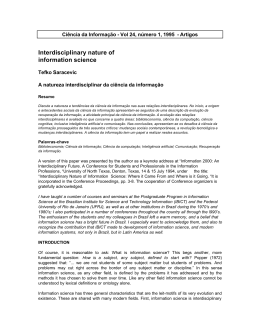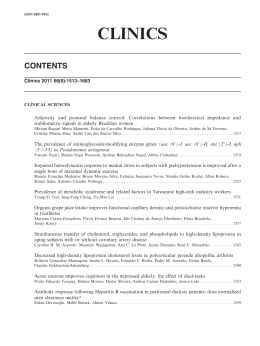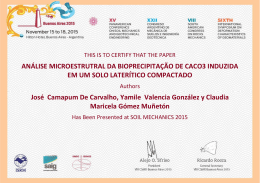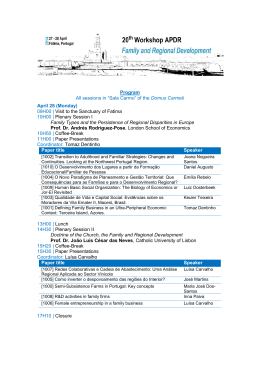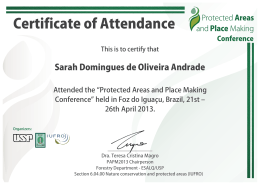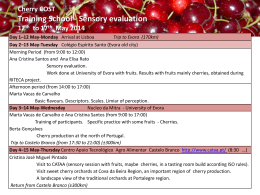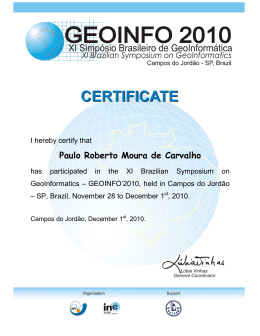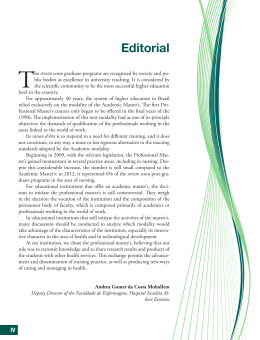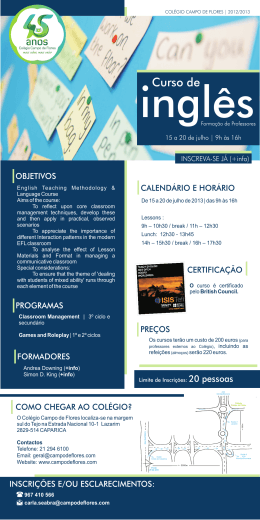UISPP Eugénia Cunha & Group of Studies in Human Evolution WORKSHOP 32: Interdisciplinary studies in human evolution WORKSHOP PLANIFICATION Time: 4 h Introduction: 10’ Presentation mode: 20’ Discussion break: 15’ Final considerations: 20’ I – INTRODUCTION 1.1. Workshop goals II – PRESENTATION MODE 2.1. Theorical contributions to interdisciplinary studies 2.2. Ancient case studies 2.3. Recent case study III – FINAL CONSIDERATIONS I – INTRODUCTION (10`) The rock art and the more recent philosophical texts reveal a typically human characteristic: the Man's insight on himself and his role in the world. Man, as always, tried to classify his surroundings with the purpose of finding his place in the natural world. But to do so he needs to know his origin. This evolutionary exercise, when the subject is Man, has some obstacles that are difficult to overcome. In that sense, the understanding of Human Evolution should consider an interdisciplinary approach. There are gaps that don't allow us to reconstruct, from beginning to the present momment, the history of the human evolutionary past. The overcome of these faults may be possible with a holistic approach of science. Taking into account all these elements, the Group of Studies of Human Evolution (Grupo de Estudos em Evolução Humana - GEEvH) is trying to develop research with the intent to demonstrate the relevance of crossing different scientific perspectives to understand Man’s past, since we drove apart of our closer relative, the chimpanzee, at about 8/6 million years ago. The aim of this Association is to develop research in the following areas: archeology, anthropology, biology of the skeleton, paleodemography, primatology, ethology and genetics. From this exchange of theories and methodologies, it is possible to propose new insights that allow completing the gaps and leading to a more complete knowledge of human history. 1.1. Workshop goals (09:00 / 09:10) The main propose of this workshop is to offer a new perspective to the knowledge of human evolution and past history, by revealing the importance of interdisciplinary studies. To persecute this intent will be considered several approaches and contemplate different chronologies. II – PRESENTATION MODE 2.1. Theorical contributions to interdisciplinary studies 1) Hammers, anvils & nuts: Chimpanzees technology? Applying the concept of “Châine Opératiore” to “nut-cracking” – Interdisciplinary research. Author: Susana Carvalho (20` - 09:10 / 09:30) 2) Working memory and modern human mind Author: Manuel Martín-Loeches (20`- 09:30 / 09:50) 3) Ethology and Paleolithic Art. Cervids and caprids in the Paleolithic art of the Côa Valley. Author: Vânia Carvalho (20`- 09:50 / 10:10) i. Discussion break (20`- 10:10 / 10:25) 2.2. Recent cases study 4) Radiologys’ contribution on cremations studies Author: David Gonçalves (20`- 10:25 / 10:45) 5) Colégio de Santo Antão-o-Novo: potencialidades de um estudo bio-antropológico de um período histórico aplicado a contextos pré-históricos. Author: Ricardo Godinho (20`- 10:45 / 11:05) 6) Interdisciplinary study of a skeletal sample recovered from Biblioteca Municipal do Porto Author: Ana Cristina Sousa (20`- 11:05 / 11:25) 7) Diet and dental health of the Late Neolithic sample from Praia das Maçãs (Sintra, Lisbon Authors: Ana Maria Silva e Teresa Ferreira (20`- 11:25 / 11:45) 8) Occupational stress markers in a skeletal sample: interdisciplinary approach Author: Sandra Assis (20`- 11:45 / 12:05) 9) Anthropological analysis of the osteological remains of a possible long termed pregnancy (Adro da Igreja Antiga do Olival-Ourém) Author: Cristina Cruz & Rui Marques (20`- 12:05 / 12:25) ii. Discussion break (15`- 12:25 / 12:40) III – Final Considerations (20`- 12:40 / 13:00)
Download
